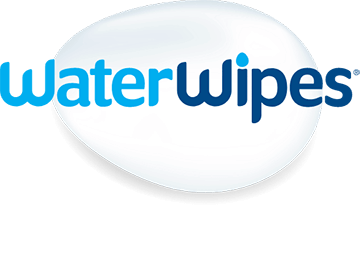Cradle Cap
Cradle cap is a common but harmless skin condition3 that usually appears before your baby’s first birthday.4 While the condition is usually painless, it can cause patches of crusty, greasy, or scaly skin to appear on your baby’s scalp.5
Cradle cap often clears up on its own in about six to 12 months3, but there are things you can do to manage it at home.
Wash your baby’s scalp daily with a mild shampoo5 and/or lightly massage the scalp with an emollient (moisturizer) to help loosen the scales3.
Use a soft brush to gently brush your baby’s scalp to remove the scales.3
Get in touch with a doctor or pediatrician if your baby’s cradle cap persists. They may prescribe a medicated shampoo, lotion, or other form of treatment.5
Fifth disease
Fifth disease, commonly known as slapped cheek syndrome, is a highly contagious childhood illness characterized by a distinctive rash that can appear on your baby’s cheeks.6
This baby skin rash can appear red on white skin, but less obvious on brown or black skin.7
A spotty rash may also appear on your baby’s legs, arms, back, and chest a few days later. Other symptoms that can accompany the rash include:
Headache
Sore throat and runny nose
High temperature
Though rare, your baby might experience stiffness and joint pain which can continue for weeks even after other symptoms have gone.7
The newborn rash usually resolves itself in about one to three weeks7, but you can manage it at home by:
Giving your baby plenty of fluids to avoid dehydration as they continue with their regular feeds.7
Get in touch with your doctor or pediatrician if your baby gets slapped cheek syndrome and experiences severe joint pain,8 or happens to have another condition – such as a blood disorder or a weakened immune system.7
Baby drool rash
Drooling is common in babies9, especially when they’re teething. But continuous drooling can expose your baby’s cheeks, chin, neck, and chest to saliva constantly10, which can irritate the skin and cause a drool rash.9 This baby rash may appear as red bumpy patches on the skin, which your baby may find itchy and uncomfortable.9
Fortunately, you can take simple measures at home to manage the drool rash.
Keep a clean, soft cloth or hypoallergenic baby wipes handy to wipe away any saliva as soon as your baby starts drooling.9
You can use bibs to absorb saliva. Just remember to change the bibs regularly.10
If your baby is drooling because they’re teething, you can give them a toothing toy or teething ring to chew on.9
Try replacing any harsh soaps and scented lotions with mild and fragrance-free options for your baby.9
You can also use a barrier cream or emollient to help protect and heal the affected area. But get in touch with your doctor first before buying any new products.9
Baby acne
Baby acne is a common skin condition that often appears on your baby’s face, neck, back, or chest two to four weeks after birth.11 Your baby may develop tiny bumps and little pimples on their face, or even harmless spots known as milia.11
These bumps may appear small, swollen, and purple to red in color (papules) or contain pus and surrounded with a dark brown to purple ring (pustules)12.
Baby acne usually clears on its own in a few days to weeks without any treatment.12 Some simple skincare tips for your baby can include:
Gently wash your baby’s skin with warm water and pat them dry. Avoid scrubbing their skin.
Avoid using any products such as lotions or oils for your baby’s acne before consulting a pediatrician or doctor.
Keep your baby’s skin clean by wiping away any food residue or vomit when they make a mess.12
Get in touch with your doctor or pediatrician if your baby’s acne worsens or isn’t going away.12
Hand, foot, and mouth disease
This is a common and highly contagious childhood illness where your baby may develop painful mouth ulcers and/or raised rashes or spots. It can occur on the feet, hands, bottom, or the groin area.13
Onset symptoms of hand, foot, and mouth disease can include:
A fever
Loss of appetite
Sore throat
Fussiness14
The disease usually improves on its own in seven to 10 days13. Get in touch with a doctor if your baby is younger than six months, has a very high temperature13 or if their symptoms don’t seem to improve after 10 days.14
Baby eczema
Baby eczema, also known as atopic eczema, is the most common type of eczema in babies, usually occurring before your baby’s first birthday. It can cause your baby’s skin to become cracked, dry, itchy, and sore.15
Your baby’s eczema might appear as small patches of dry skin, or as widespread inflamed skin all over the body.15
Baby eczema is usually a long-term chronic condition, but it may improve significantly or even go away as your child gets older.15
Some home treatments can include:
Applying a moisturizer or fragrance-free cream on your little one’s skin daily to protect it from going dry.
Giving your baby a lukewarm bath, no more than 10 minutes, to soothe any itchiness.
After bathing, patting their skin dry. Don’t rub.16
Your doctor may prescribe topical corticosteroids during flare-ups to reduce itching, redness, and swelling.15
Get in touch with your doctor if light brown or yellow crusts or pus-filled blisters start to appear on top of the eczema. This could be a sign of a bacterial infection.16
Meningitis
Meningitis is an infectious disease that can be caused by certain fungi, bacteria or viruses.17 One of the characteristic symptoms of meningitis may be a distinctive red rash. This rash usually starts as red pinpricks before spreading out as purple or red blotches.18
You can do a simple test to see if it’s a meningitis rash by firmly pressing a clear glass against your baby’s skin. If the rash does not fade, then it most likely is a meningitis rash.18
The rash may be harder to spot on black or brown skin, so you might have to check paler areas such as the palms, soles of the feet, or roof of the mouth.18
Other symptoms that can accompany the baby rash can include:
Irritability
Refusal to feed
Stiff body, floppy or unresponsive
Bulging soft spot on top of the head
High-pitched cry
High temperature18
Seek immediate medical attention if you suspect your baby has meningitis because symptoms can worsen quickly, and the disease can be life-threatening.18
Chickenpox
Chickenpox is a common spotty childhood rash that occurs anywhere on the body. While it mostly affects children, it can come at any age. The rash can be itchy and can last about one to two weeks.19
Chickenpox usually takes place in three stages:
Red or pink spots appear inside the mouth or anywhere on the body and may be painful
The spots fill up with fluid to become very itchy blisters.
The blisters burst to form scabs which can be flaky or leak fluid.19
Home remedies for chickenpox can include:
Bathing your baby in cool water and patting the skin dry. Don’t rub.
Cutting your baby’s fingernails and covering their hands with socks to prevent them from scratching at night.
Dressing your baby in loose clothes.19
It is uncommon for newborn babies to catch chickenpox as babies will usually have temporary immunity passed onto them from their mother. If your newborn shows signs of chickenpox, you should get in contact with your doctor as soon as possible. If the rash feels warm or tender, it may be a sign of a bacterial infection.20 You can also get in touch with your doctor if you’re unsure it’s chickenpox or if you’re just concerned about your child.19
Baby rashes from nature
Your baby or toddler may have come into contact with something outside, such as grass, which has irritated their skin causing a rash or hives.
Newborn rashes from things outdoors generally disappear on their own. But if they appear alongside other symptoms such as swelling of the face or difficulty breathing, seek immediate medical attention.
For more information on grass rash, hives, and poisonous plants, check out our guide on common outdoor rashes.
Baby rashes from food
Your baby’s skin rash may be a result of allergies to certain foods. Eggs and milk are common food allergens, as are shellfish. If you believe your child has a food allergy, speak to a healthcare professional who will advise you on how to establish and manage the food allergy.
Baby rashes from chemicals in products
Your baby’s skin can still be sensitive even after they leave the newborn stage and can react to certain ingredients found in personal skincare products such as perfumes and chemicals. This can result in redness or sore-looking skin.
You can shop around for fragrance-free skincare options, or you can keep some hypoallergenic baby wipes handy in case you need to quickly tend to your baby. For more on baby skincare, read our baby skin conditions guide.
Baby rash: When to see a doctor
Many things can cause a baby rash, and they’re usually nothing to worry about. However, get in touch with your doctor if your bub has a newborn rash and:
A high temperature.
Stiff neck
Difficulty breathing (breathing very fast, breathlessness, tummy sucking under their ribs, grunting)
Seems to be bothered by light.
Their skin looks blotchy, grey, blue, or pale.
The rash does not fade when a glass is firmly pressed against the rash.
These could be signs of meningitis.21
Baby rash FAQs
How to tell if a baby is having an allergic reaction?
Allergic reactions in babies can happen quickly once your baby is exposed to an allergen. Reaction symptoms can include:
Red, itchy rash
Wheezing and coughing
Red, watery, itchy eyes
Blocked or runny nose
Sneezing
While most allergic reactions may be mild, please seek medical attention if you are concerned.
How long does infant allergy rash last?
After removing allergenic foods from your baby’s diet, it can take about one to two weeks for the allergenic reaction to go away.23
What does allergy poop look like?
One common symptom of a cow’s milk allergy in babies is blood in the stool. The poop may also appear to look like diarrhea, runny, frequent, and containing mucus.24
For more information on other types of baby skin rashes, you can also read our other articles on the Parenting Hub:
• Baby grazes
How we wrote this guide
The information in this guide is based on parental and medical information from a variety of sources including Healthline, the NHS, Mayo Clinic and WebMD.

